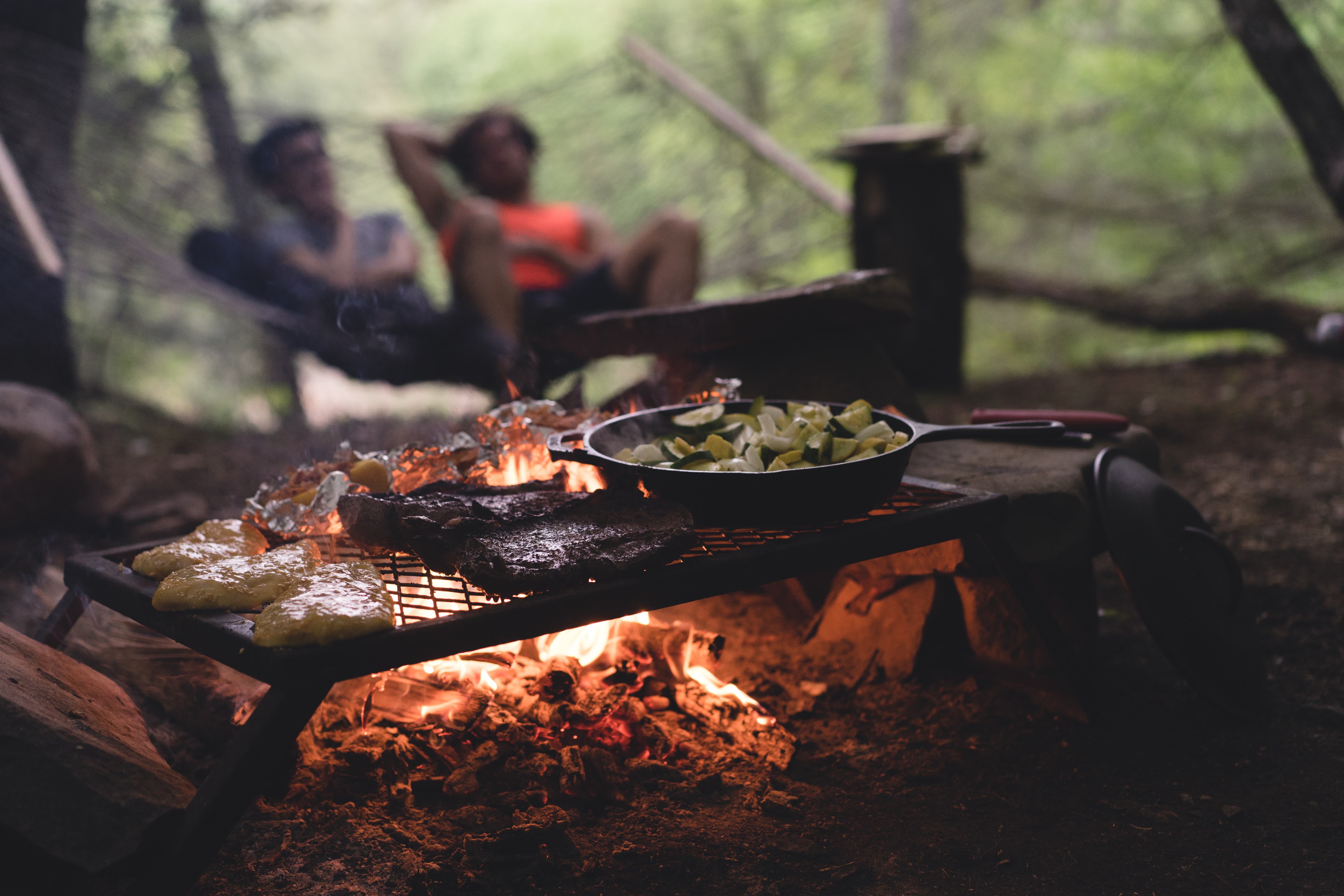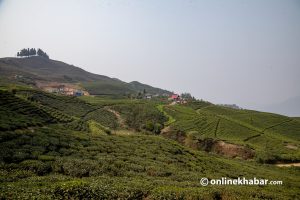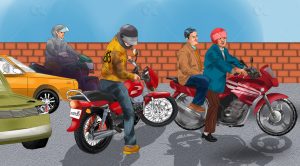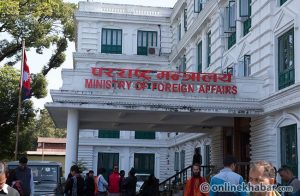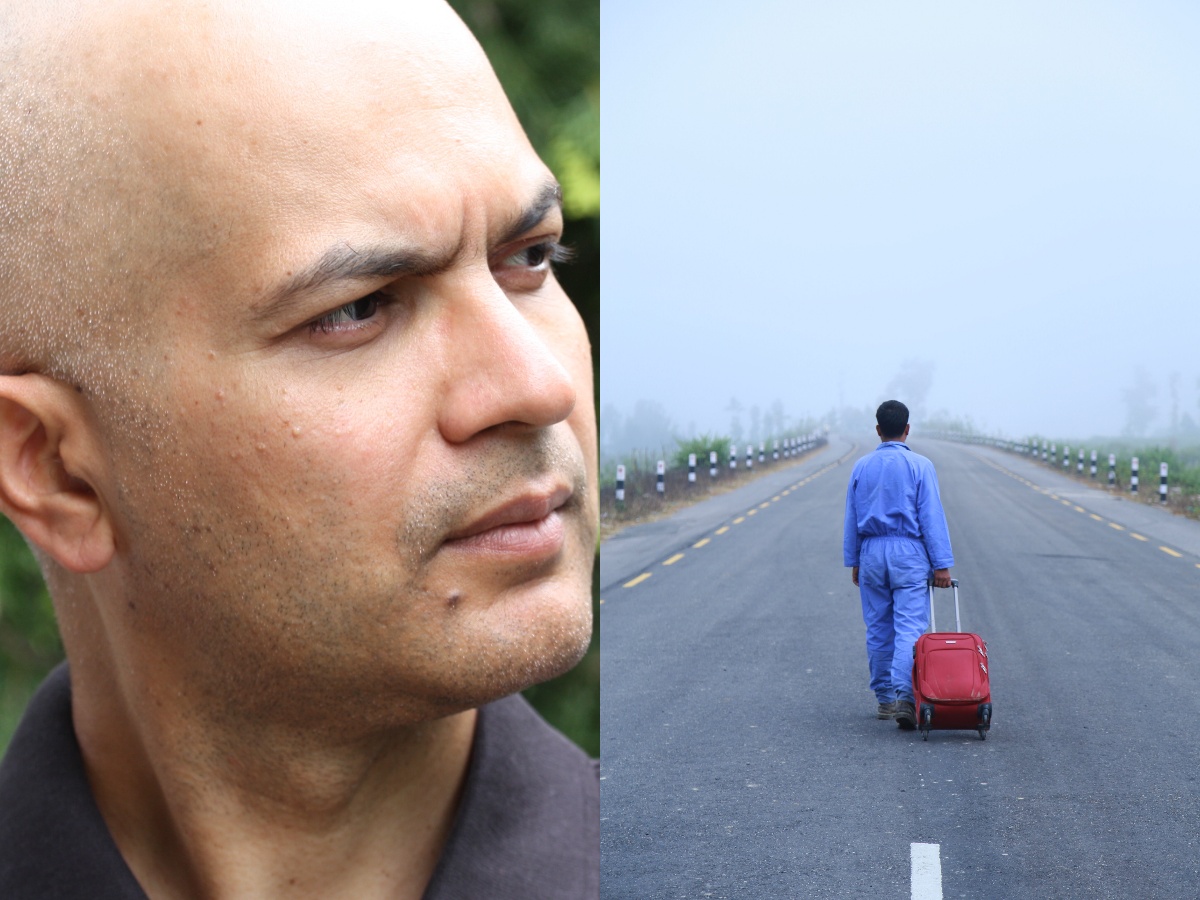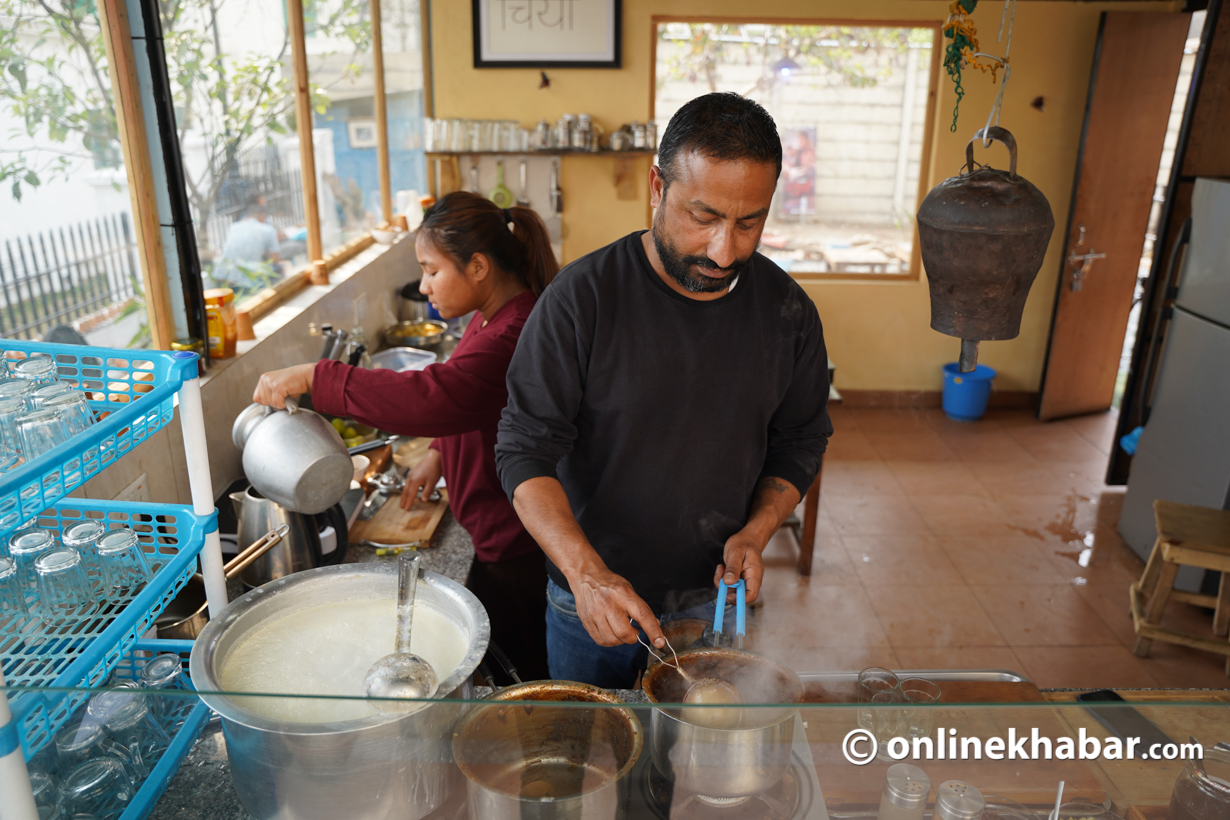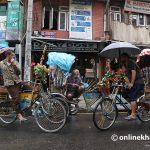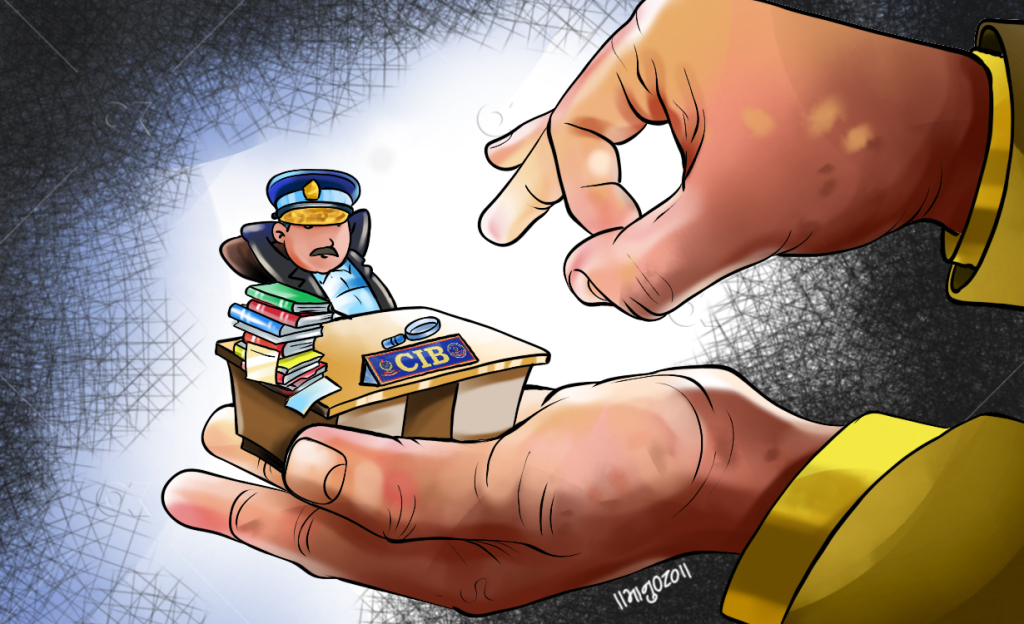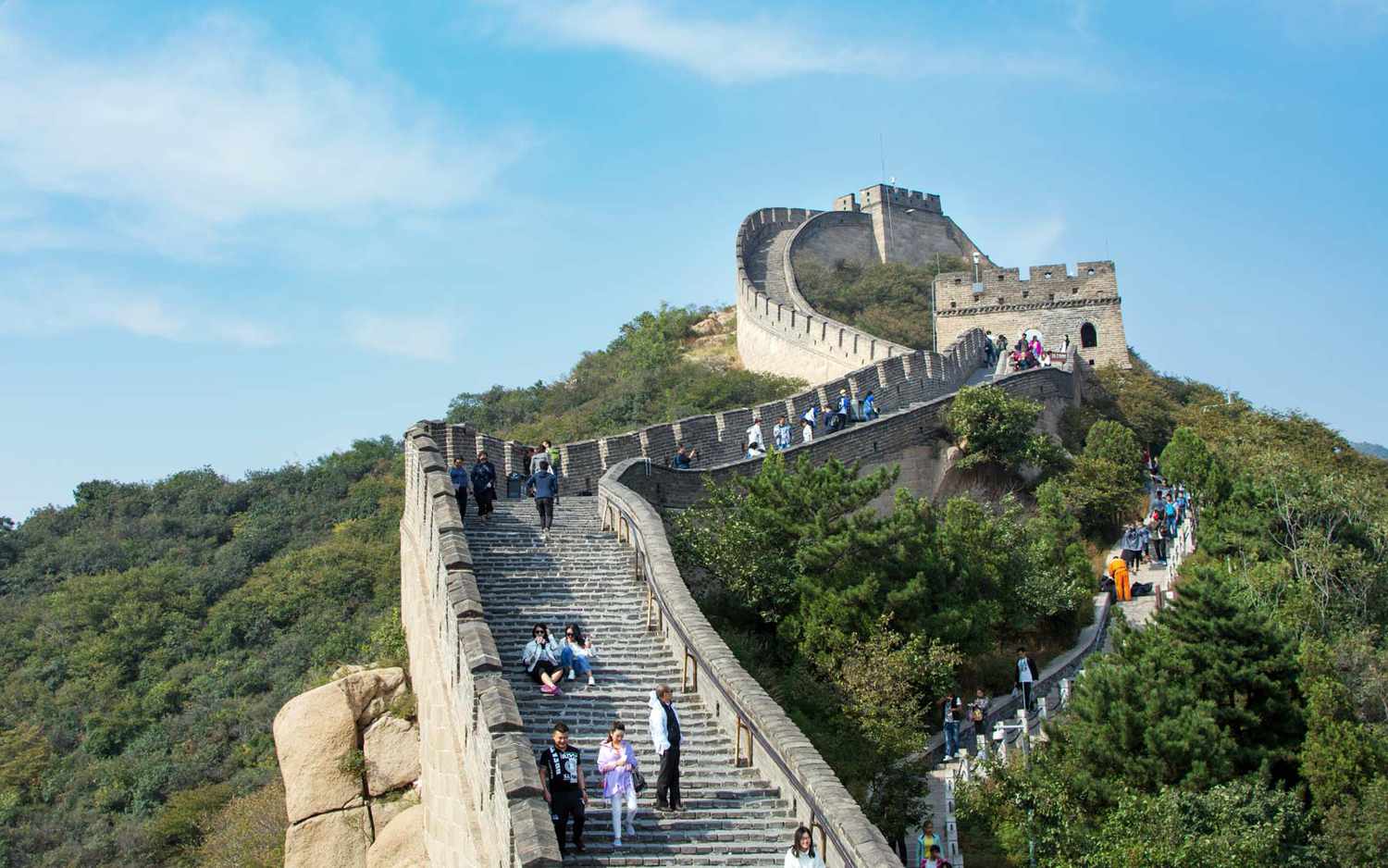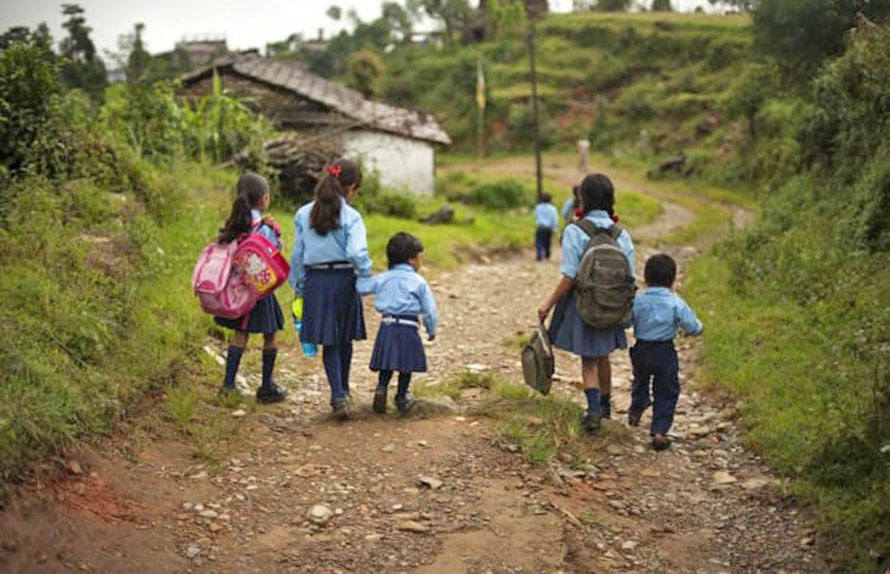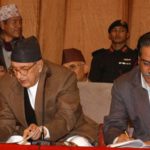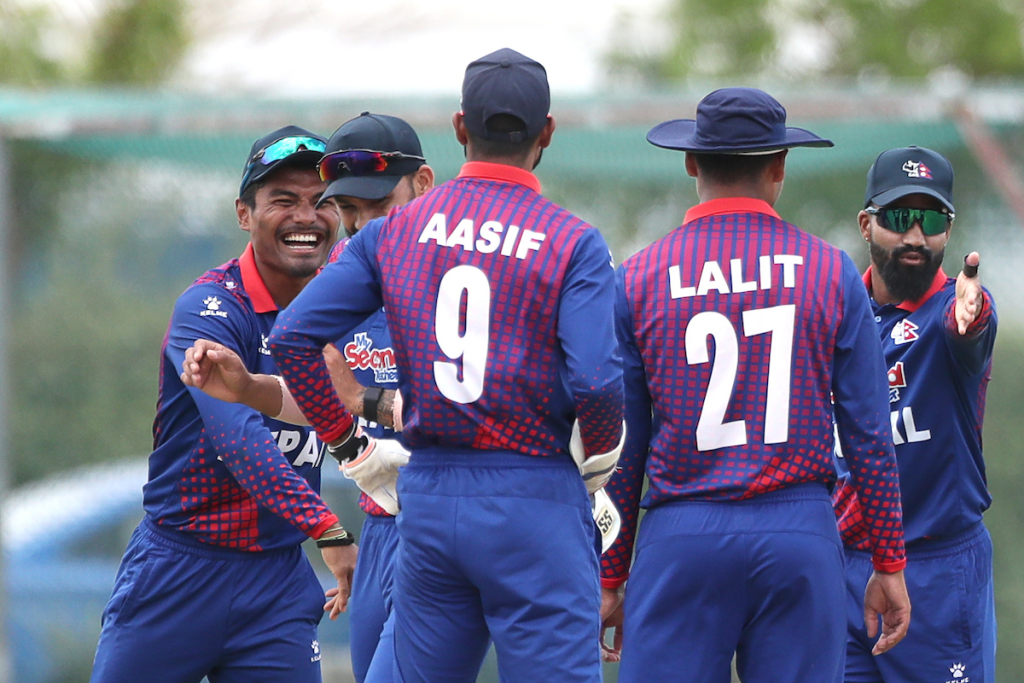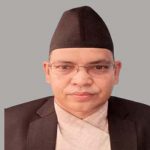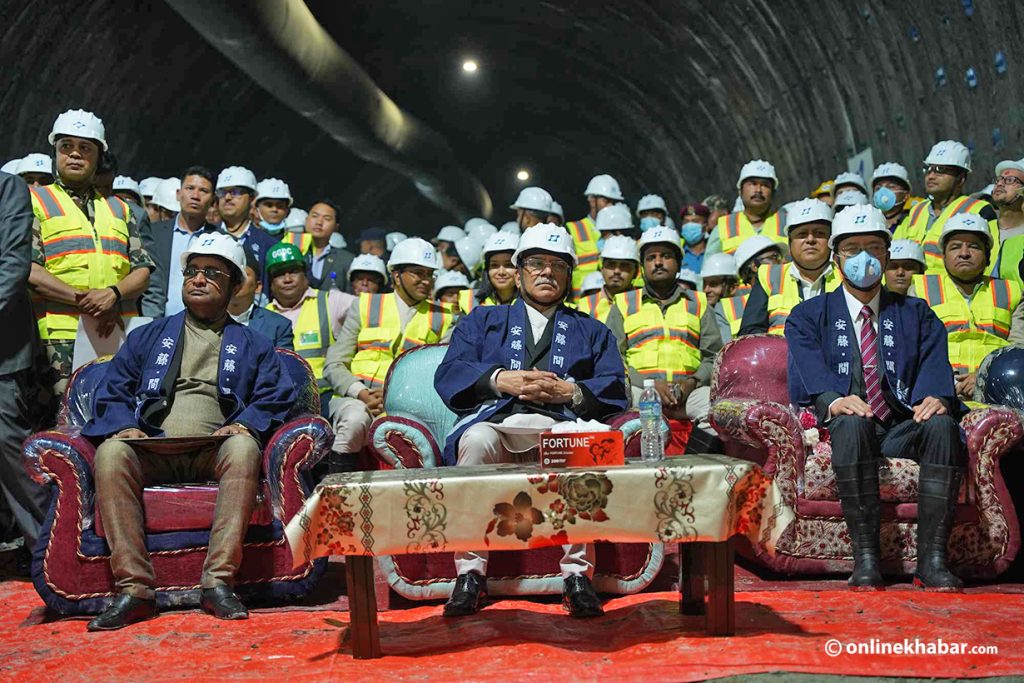
Alaina B Teplitz is the United States’ Ambassador to Nepal since 2015. Teplitz is also a well-known figure among the Nepali Twitterati. In the two years that she has been in Nepal, she has not only travelled the length and breadth of the country but also observed local festivals with enthusiasm. As Nepal and the US mark the 70 years of friendship, Upendra Pokharel, Abhaya Raj Joshi and Diwakar Pyakurel of Onlinekhabar talked to the ambassador about her experience of interacting with Nepalis by travelling around the country, and by using Twitter.
Excerpts:
We saw on Facebook that there were celebrations at the embassy on the occasion of Dashain and you took part in it. You also received Tika and danced with your staff.
First of all, I consider myself fortunate that I had the opportunity to interact with people and celebrate with my team. Being an American abroad, I look at local celebrations as a way to better understand people. Most importantly, I can offer my respect to the culture by participating in understanding the holidays. I am sure that many foreigners in the US do the same around the year, especially on festivals such as Thanksgiving. These are really two-way exchanges.
What is particularly meaningful for me is that I get to share experiences with my team, the people I work with every day. They work so hard to advance mutual agendas between the US and Nepal. Yes, this Dashain was a lot of fun; we did have nice celebrations.
Nepal is a country of festivals. Is there any particular favourite festival that you look forward to every year?
I personally like Tihar a lot. One of the reasons is that I like the idea of welcoming Laxmi into the home. Also, I like Kukur Tihar because I have a Tibetan Terrier; I brought her here from the US, but the breed has its origins in this part of the world. You may have seen on my Twitter, I shared her pictures. The festival gives me a little chance to say thank you to my companion.
It seems that you had already visited Nepal before being appointed ambassador.
I only had a chance to visit Nepal once in 2010. It was a very brief work-related trip. At that time, I had a chance to visit Pashupatinath, Durbar Square and all significant sites of Kathmandu. And, when I was nominated the ambassador, I had a little bit idea of where I might be coming to. But I when I talked to people before coming to Nepal, the tremendous love American people have for Nepal became very clear. Many Americans had ‘long-term relationships’ with Nepal. And, the ties go both ways.
Do you remember anything interesting from that trip?
I went to Swayambhu and I recall the monkeys, which for most Americans is an unusual experience as they often see them only in a zoo. To see them out and about with very distinct personalities struck me at that time.

President Obama nominated you as the ambassador to Nepal in March 2015 just a month before the quake. As the ambassador nominee, what was going on in your mind, especially after looking at the photos and videos from Nepal in the press? What was the reaction from your immediate family members?
Yes, I was nominated the ambassador just before the earthquake. One of the issues we were discussing even before that (the quake) was the need for disaster preparedness in Nepal because of the possibility of massive earthquakes here. Of course, one earthquake occurred, but other potential quakes still exist. Everybody prepares, but nobody expects the event to come.
There was a great deal of surprise and concern in the US after the earthquake as the number of casualties became clear, and certainly, it was a major disaster. Well, I was not involved in preparing the response because I was not confirmed by the Senate. But I could see that the US had a massive response to the earthquake here and it was part of what we had been working on. We had been working on disaster management capacity, in terms of infrastructures and in terms of crisis response mechanisms in coordination with military, civilian governments and international donors and partners.
Clearly, my family said like, “Are you crazy?” I was also bringing my son and they (my family members) were really worried. But, that thing can happen in any part of the world. The key is to recognise the challenge and to be as prepared as we can. After arriving here, I found that the embassy was already working towards it and I was concerned how we could help Nepal.
My job was to help the transition from response to reconstruction. People were tired and nervous as aftershocks were occurring. I was little nervous too. But, eventually, we made the transition and worked with the government to figure out where our help could be most useful.
What was the time when you heard the news of earthquake first? What were you doing where?
It happened at night for me as it was midday here. Just a day before, I had visited the Office for Foreign Disaster Assistance, Crisis Management Response Centre in Washington and we were talking about earthquake preparedness in Nepal. It was very ironic that I woke up to the news of earthquake the next morning.
Then there were emails and phone calls from people, but they were less worried as I was not flying to Nepal the next day. People also understood that such things can happen anywhere. And, I could manage their expectations as I was not arriving here until October.
Going back to June 23, 2015, in the statement you made to the US Senate Foreign Relations Committee, you said that the US has three major objectives in Nepal: to strengthen its democracy, advance its economic growth, and improve its resiliency. Could you give us a brief overview of the embassy’s work in these three areas during your tenure?
Those are our goals and objectives in Nepal today. About democracy, local elections have recently been held and they are important milestones. I wrote myself after the passage of the constitution that some of these things might be imperfect; they are not as good as you want them to be. But, they are still significantly better than having nothing.
The work we have done in this sector includes engaging all actors, including political parties and government to encourage elections and ensure that the elections were inclusive and peaceful. We built a solid foundation through a number of projects, helping people register to vote, doing things to support the Election Commission and its ability to carry out the process of elections. The projects are being tested, but we have also begun to see them work. They might be imperfect, but I think we have some success.
Perhaps we have many comments on where the constitution might go in the future, but we will continue to advocate for broader inclusion of all segments of society; these things come in small steps. And, the progress is really good.
That progress, I think, is critical for the second goal of strengthening the economy. It is not just the laws and regulations that are problematic in terms of attracting foreign investment, it at also the lack of political stability that has been a turn-off for investors. We try to make that point and help the government change laws and regulations to make the environment more attractive. Specifically, we are providing technical advice on what a good environment and what a good foreign investment law would look like, providing assistance to the government to draft the intellectual property right legislation. We have also worked with the private sector on what they would like to see in the environment.
We are also focused on entrepreneurship: how can people help themselves start their businesses. We also look at the supply chain in agriculture. Even if a farmer grows a lot of vegetables, but is not sure where in the market these vegetables go, what is the point? So, we look at these linkages.
On resiliency, we continue to train Nepali Army and other security personnel for rescue and safe building demolition. We also work with the airport authorities on better handling the cargo, which does not seem much exciting, but it was also a major challenge during the earthquake. On the technical part, we try to be as helpful as we can.
In all these areas, we are not partnering with just the government. We work with the private sector, civil society, community organisations and academic institutions. We are not here to impose the solutions to those problems; we are here just to help the communities build the society in a sustainable way. Development is going to happen by Nepali strength.
In addition to these three objectives, you have also said in your interviews in the past that your personal cause would be to work for Tibetan refugees, women, disadvantaged populations, and for those vulnerable to trafficking. Is there any particular personal reason you chose this cause?
Involving women and marginalised groups in political and social issues is a key to a thriving democracy. Everybody should have an ability to participate as it is their right. From an economic perspective, if half of your population, women, are not involved; you are not getting the full benefits. It is incredibly important that everyone no matter what group you are from and what gender you are, should have equal opportunities like the person next to them. It is essential for Nepal, to reach the middle-income status by 2030, to make sure that everybody has equal access to opportunities. I also feel motivated because these are international norms and standards of human rights that everybody has equal access to express themselves, practice religion, learn and lead a happy life.
In terms of refugees, there are two key groups here. We have been able to resettle a significant section of Bhutanese refugees in the United States. But, there are Tibetan refugees too and we have international agreements about rights of refugees. Nepal has been a gracious host to these groups and my goal is to engage with the government to find durable solutions for these groups to ensure that their rights are respected.

Is there any possibility that the Tibetan refugees can also be resettled in a third country like the Bhutanese have?
Even though the majority of the Bhutanese refugees have been resettled, there are still many living in Nepal and finding solutions for them is really important. For the Tibetan communities also, we have to think of solutions. But, today, there is a global refugee crisis. And, the majority of refugees internationally are not resettled. They remain in ambiguous situations; do not have good options. Therefore, we try to do the best of what we can for them. Nepal has always been a gracious host to those groups and we are contributing significantly, financially, through UNHCR that the refugees can be settled.
Why is trafficking of women a big concern for you?
The personal motivation, again, is that these people deserve a better opportunity in life. For women, in particular, access to education, knowing their rights, and having jobs that are respectful are important. As a woman, I was able to benefit from these rights and I want to make sure that all women in Nepal also benefit from these as well. It is not a hard thing to achieve.
Women, who have been trafficked or at the risk of trafficking, want to have good stories. But, their situation is bad at home; they do not have access to education; the level of poverty is high. These things can be addressed when communities come together. At the personal level, I find it offensive that people find themselves forced to make bad choices. It is a global issue and also a challenge in my own country. But it is something we have already committed to.
We want to emphasise a couple of ways we have been helping out. One of the ways is to support victims by giving opportunities to re-enter the society. We are also looking into law enforcement. We are trying to provide support and training to prosecute the traffickers.
The President and the Speaker in Nepal are women. Earlier, we had a woman Chief Justice. Interestingly, the number of women ambassadors in Kathmandu is also growing. How do you feel about it?
I think it is all positive. They, including President Bhandari, are role models. Other women, not just in Nepal, but from other parts of the world look at them and say, “Oh I can do that too!” Diversity is a good thing. It is a good thing when you run an institution, when you run a country. People come with different perspectives on the table. The President, the Speaker, other women in Parliament, their male colleagues and people from different ethnic groups challenge each other when they try to solve problems and our belief is that diversity leads to better decisions at the end of the day.
It is this belief we also have in the US, and we are struggling to ensure an equal ratio of men and women and greater diversity among racial and ethnic lines there. It is the same challenges that Nepal faces. Nepal is not struggling alone.
Some people think that it is easier for women to strike a conversation and to work with people.
I am not sure that women are more open to establishing links. But, where the culture is more traditional, it is easier for women to talk to both men and women. Some of my male counterparts face more challenges in talking to women and I take the advantage of that. I would like to hear from all people what they have in their minds and I have access to both men and women.
With that said, how is your interaction with the Chinese Ambassador, who is also a woman, like?
The Chinese Ambassador and I have a friendly and cordial relationship. We have some shared hopes for Nepal for political stability and economic development, which most of the Nepalis are interested in.
Now let’s talk about the two ‘Ts’ you have given importance to during your tenure here: ‘Twitter Diplomacy’ and ‘Travel Diplomacy. Could you tell us, how has your experience interacting with the Nepali twitterati been?
Social media is obviously a way to connect with people and it is different from sitting across the table and having meetings; and it is also different from emails, which is binary. There are many young people in Nepal and it is really important to have dialogues.
There is a little bit of dialogue [between me and Nepali people], back and forth. People are responsive in offering their views. When I say something, they agree or disagree. At least there are one or two people out there saying it is good or bad. But, I do not fight on Twitter, I think that is not my thing.
I think it is an opportunity to express myself and have dialogue. I also think it is an important platform as an ambassador to share my love and respect for Nepal. I also share some success stories. I see good things happening and want to share them with people. I also take that advantage to ask people, for example go vote. It is a good and reliable platform for communicating and Nepalis are active on Twitter.
One thing very important in a democracy is the open discussions on various issues. Problems are complicated and there are not necessarily simple solutions. Having a robust discussion or prompting discussions is important. They are very healthy.
I would like to encourage young and other people in Nepal to engage in such discussions and that is how problems get resolved in a democracy. This is how politicians can be influenced as they know what public opinions are.
Is this your personal initiative or do all US ambassadors across the world do it? Is there any ‘Twitter diplomacy policy’?
There is no policy as such, but a lot of US ambassadors tweet. We all do what fits in the place we are in. But, there is no particular guidance on what to do and not to do. We have our own style and judgment. I would like to make sure that I have an opportunity to interact with Twitter followers.
Is there any particular incident that you remember about interacting with Nepali Twitter users?
Recently, I had tweeted my op-ed about corruption in Nepal and there was a great deal of comments coming back and forth, though not long dialogues. I knew people here are not satisfied with the level of accountability and transparency. I take such dialogues as a good thing and I will be encouraging people to think about what they want in their future. I also remember my encouragement to people before the rounds of local elections to go vote and hold their leaders accountable for what the voters want as citizens. They need to tell the leaders that “If I elect you, you owe me something, not money, not favour, but it’s good governance and prosperity.”

What about ‘Travel Diplomacy’?
There are a couple of dimensions to my travel. We have various programmes in different parts of the country, including English language training, agricultural programmes and counter-trafficking projects. I would like to see them in action and talk with people. I could read reports, but it is not as same as having interaction with people. It is a part of my monitoring.
Nepal is so different: plains, hills, mountains; all different ethnic groups, 127 languages. So I appreciate the opportunities to travel. It is also a chance for me to tell people why the US is in Nepal. I also have a chance to get outside the Kathmandu valley. You cannot really understand Nepal if you spend all your time in Kathmandu, which we can easily do. So, it basically has three things: hear from people, share with people and understand the country and what people really think better.
I have travelled in the Terai, the hills and a little bit of mountains. But, there is no favourite place. They are all different and great. It was a privilege for me to go places like Janakpur, Lumbini and Mustang—they are not something everyone has a chance to do. I consider myself fortunate to have gone to places like that.
We have heard your interviews on local FM stations. How does it fit into your objective of strengthening the bilateral ties?
Not everybody is on Twitter and a lot of people listen to radios. It is a chance to share not only what I have been doing during that trip, but also highlight what the US is doing in Nepal and I cannot find any better chance to explain it. Also, I understand that my Nepali is not so good and many people’s English is not so good, and it’s okay. And, on radio, I get a chance to have interpreters and let people know in Nepali language what I have been saying. I think it is important for people to have dialogues.
Mustang has always been special for US ambassadors, who started going there only recently. You have also been there, and the US government is helping conservation projects there. Could you tell us, what makes Mustang so special?
I am the third US ambassador to visit Mustang. We have two projects in the area: the first with Annapurna Conservation Area Project, doing studies with the wildlife and conservation. Then, we have a cultural preservation project that provides small grants to preserve temples and other monuments.
I take it as an opportunity to go to places that have potentials, both for tourism and entrepreneurship. I met a number of people on the way who have big plans for places like Mustang. Another dimension to this is that the difficulties the people of this area live in. In the winter, it is even harder to live in Mustang. So, how to make places like that function is my interest. Another dimension is that of general appreciation for the variety Nepal has in terms of cultural heritage and religious and ethnic diversity. In upper Mustang, you have a rich cultural heritage of Tibetan Buddhists and it is a unique part of Nepal’s cultural history.
We once hiked from Jomsom up to Lomanthang. And, it was unforgettable. I also saw visited in Jomsom the High Altitude Warfare School of the Nepali Army, where American army personnel go every year and train with Nepali counterparts. I saw them demonstrating different skills like mountain climbing and mountain rescue, oh my goodness! Certainly, Mustang is at a high altitude, higher than the highest altitude of the US and it was a unique experience.
Nepal and the US are observing 70 years of diplomatic ties, and the events are to conclude in December. We know the embassy selected a partnership theme for every month this year. Can you please summarise major activities held on the occasion?
This year marks 70 years of our relationship and it is a good opportunity to celebrate our achievements together, but also to be forward-looking. December is the last month and the theme is ‘Next 70 Years’; the future of relationships that we want to achieve together. I deliberately did not want it to be all retrospective; I wanted to think about where we need to go, what are opportunities and challenges and have some dialogues.
All the themes are related to issues that are important to us for bilateral cooperation. We have covered many themes from disaster risk reduction to inclusion, security relations, education, counter-trafficking in persons, democracy in governance and health. We have taken this opportunity to remind everybody as well as ourselves of the number of engagement points and what is important about these points. It just gives us a chance to provide a framework for discussing our relationship and looking forward.
In these 70 years, a lot of things have happened in both the countries. What struck me as we began planning for this year was that the many things have stayed the same: having a solid relationship; looking and listening to our mutual ambitions; the progress of some development efforts and wanting them to be the foundations of our future. I also look at institutions that we have shared like the Peace Corps. We did a photo retrospective of the Peace Corps volunteers recently and it was astounding to see the volunteers then and now. It was a people-to-people level relationship. Fulbright is another example of that. It gives us a chance to understand better where we are and look forward to the future.
As we observe the 70 years of diplomatic ties, we are reminded that the US was one the first countries to offer foreign development aid to Nepal. Has the US government assessed how its aid has been used and what impact it has had on Nepal over the 70 years?
One of the things we are always looking at is if our programmes are effective. Our funders, the American Congress and American people, want to make sure that their money is going to the place that they want it to go to. Just on a small scale, we do regular monitoring of the projects and we review with the government. We obviously see many successes, particularly in the fields of health and education. We can see literacy rate for women growing and the average life expectancy has doubled from 35 years to 70. I believe that American programmes have contributed significantly to those changes, though they were not the sole factors. And, I also look back at the institutions that were set up as a result of our relationship; female community health volunteers, for example, are a huge part of the rural and urban life of Nepal, and we had started that together.
I have already mentioned some of the works that we did in the field of disaster preparedness. The Nepali Army, Nepal Police personnel were able to rescue people quicker after the earthquakes and displaced people got access to clean water. Again, we were not the sole contributors, but were significant.
With our programming, we look at how to build a whole country. The programmes are based on interactions with the government, but a vast majority of our programmes does not go through the government.
We coordinate with the government; we develop programmes based on government priorities; we collaborate with the government at every possible step; we do joint monitoring, but we also work with others to implement the programmes. The reason: in a democratic society, the government is not the only answer to every problem. Civil society, business communities and others are very important partners to make a society prosperous, stable and secure. Our philosophy is to work with that whole array of partners to address issues.
But, we also recognise that the government has a unique role. For example, we have been doing public finance management and anti-corruption programmes with the government. The Millennium Challenge Corporation Compact signed in Washington last month is also a part of it, helping the government do what it needs to do and making the environment where everybody can prosper.
So we do regular monitoring of individual projects and we are looking at them in overall, and we change those programmes and emphases as the needs dictate and help our joint priorities get established. We work in various sectors like health, education and agriculture; but also legal sectors like the rule of law because democracy thrives when it has a strong legal environment. We want to make sure that not just individual projects, but the whole portfolio, return results. That portfolio and priorities are decided by Nepal itself.
But, no high-profile visits have taken place from the US in the past few years. Can we expect any of such visit as Nepal and the US mark the 70 years of relationship?
As far as I know, we are not expecting any particular visitor anytime soon, but who knows what the future holds? I would also like to say that the exchange of high-level visits is not the only expression of our connectivity; in some respects, we look at our ability to communicate and connect with the Nepali society and it is the real strength of a relationship. The grassroots connections and the relationship between the two nations are on our focus.
One thing about social media is that it has given access to information to people and it is symbolic of the way the world is changing. Today, it is not just about narrower channels of communications. Hence, the relationship is also not only government-to-government (G2G), but also people-to-people (P2P). So, this is our focus for now.

Looking at data from 2001 to 2015, we see that US assistance to Nepal has fluctuated a lot in the recent past. For example, in 2001, the US government provided $28 million to the Nepali government, the figure rose to $51 million in 2005, but in 2010 the amount went down to $50 million. But in 2015, the amount shot up to $223 million. Does who comes to power in the US and (or) Nepal affect the amount?
Clearly, the assistance is going on ebb and flow over time. Some of it is the reflection of the priorities established by the Congress. The year 2015 was an unusual year because of the earthquake and a lot of humanitarian assistance was provided to deal with the immediate crisis in the aftermath of the earthquake and then for reconstruction. That was a very strong commitment on the part of the Congress and the administration to maintaining ties and connections here. I cannot say definitively what will be the level of assistance next year as you point out there are many variables. It could be party politics; it could be other priorities that are competing. But, I can certainly say there is a consistent desire to provide support to Nepal in response to the needs of today, which will also build foundations to deal with future’s problems.
We also see that Population Policies and Reproductive Health has been the number 1 sector for US assistance to Nepal. With President Trump’s global ‘gag’ rule, what impact will there be on this sector?
The Protecting Life and Global Health Assistance Policy was established in 2017 and it is something that we are working to implement across our programmes. But, maternal health and reproductive health are something we remain very committed to. As you know from our 70 years of history, maternal-child health has been a great emphasis for us. Administrations change the policies and our current policy is different. But, its impacts in Nepal I think will not be so significant. Some of that has to do with the nature of the programmes that we have here; the programmes here do not necessarily align with all details of the policy. You will not see us back away from maternal and reproductive health, but how we manage some aspects of those programmes will change in accordance with the policy.
What would be your message to the Nepali people as they prepare to go for elections?
My first message is: go vote because for the citizens it is the best part of democracy and your individual vote really does matter. The second message is when you cast your ballot; think hard about what you want from your leaders and where you want to see your country go. I am not telling you what that direction should be, but in a democracy, this is a mechanism through which citizens can express themselves and tell their elected representatives how they have to be responsive to the people who elected them.
I hope all big and small parties really think about their priorities for the future. Not only democracy and good governance, but the economy is also equally important. The foreign investment environment and the environment for domestic investment, I believe, are important for a democracy to succeed. Citizens who have no jobs, no future, no hope for prosperity are unhappy citizens. This is the message I hear from all the politicians I talk to, but I hope that they take it seriously and make the changes while going forward.
The last message to all–general public or civil society or political parties—is that they need to truly address issues of corruption and accountability. If the community is not going to tolerate corruption, it will eventually stop. People do not want corruption to be what Nepal is known for and some of them can make it end. It could be voting for one candidate versus another or it could just be making their expectations clear from newly the newly elected government.





